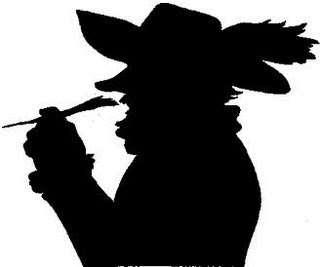
No, of course they're not, though there are exceptions. In circuses they're a necessary change of pace. In fact, it's hard to imagine a circus without them. But the circus is their domain. Why do they seem so out of place in the real world?

The history of clowning is an odd one. Apparently part of the appeal of clowning was that they got away with social satire that would have landed ordinary people in jail. They paid dearly for that freedom by confining themselves to strident, way-over-the-top slapstick. Maybe by imitating crazy people they were asking to be regarded with the deference that society grants the mad.
Clown humor is so different than modern humor, so different even from modern slapstick like the kind The Three Stooges did, that I sometimes wonder if modern humor came from entirely different roots.

Here's a painting about two different types of clowns who meet on the street and fight by proxy through their dim-witted footman.

Here (above) a woman appears ready to deliver an eye-gouge to an already wounded clown. That's a really terrible thing to do, but it shows you how clowns were regarded. Or maybe she's just gouged the poor man. If so, she doesn't appear very sorry about it.

Early clowns wore a specific costume, denoting the exact type of comic character they were portraying. Woe unto the clown who wore the cuckold's uniform when he was instead portraying a dullard.

Clown costumes were sometimes exaggerated versions of the fashion of the day, but it's hard to resist the notion that they also gave birth to some of those fashions.

Were the people who used clothing to make funny alterations in their body shape in the 17th to 19th centuries actually trying to dress like clowns? After all, people envied clowns for their ability to say things nobody else could. When a lot of people dress that way, maybe a desire for freedom of expression and a new social order is indicated.
P.S.: None of this applies to mimes, who I have new respect for, after having tried to walk like they do.
















































